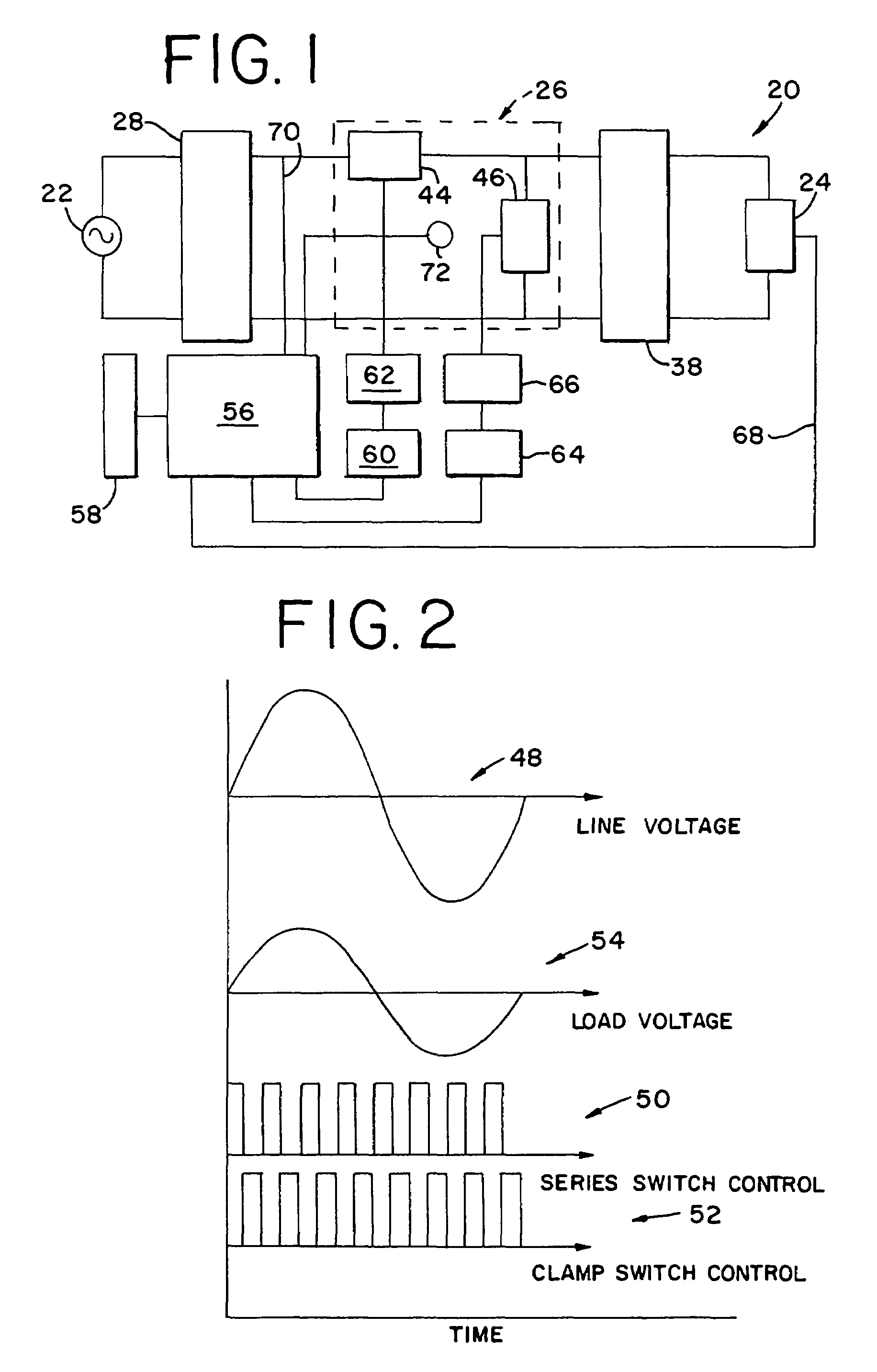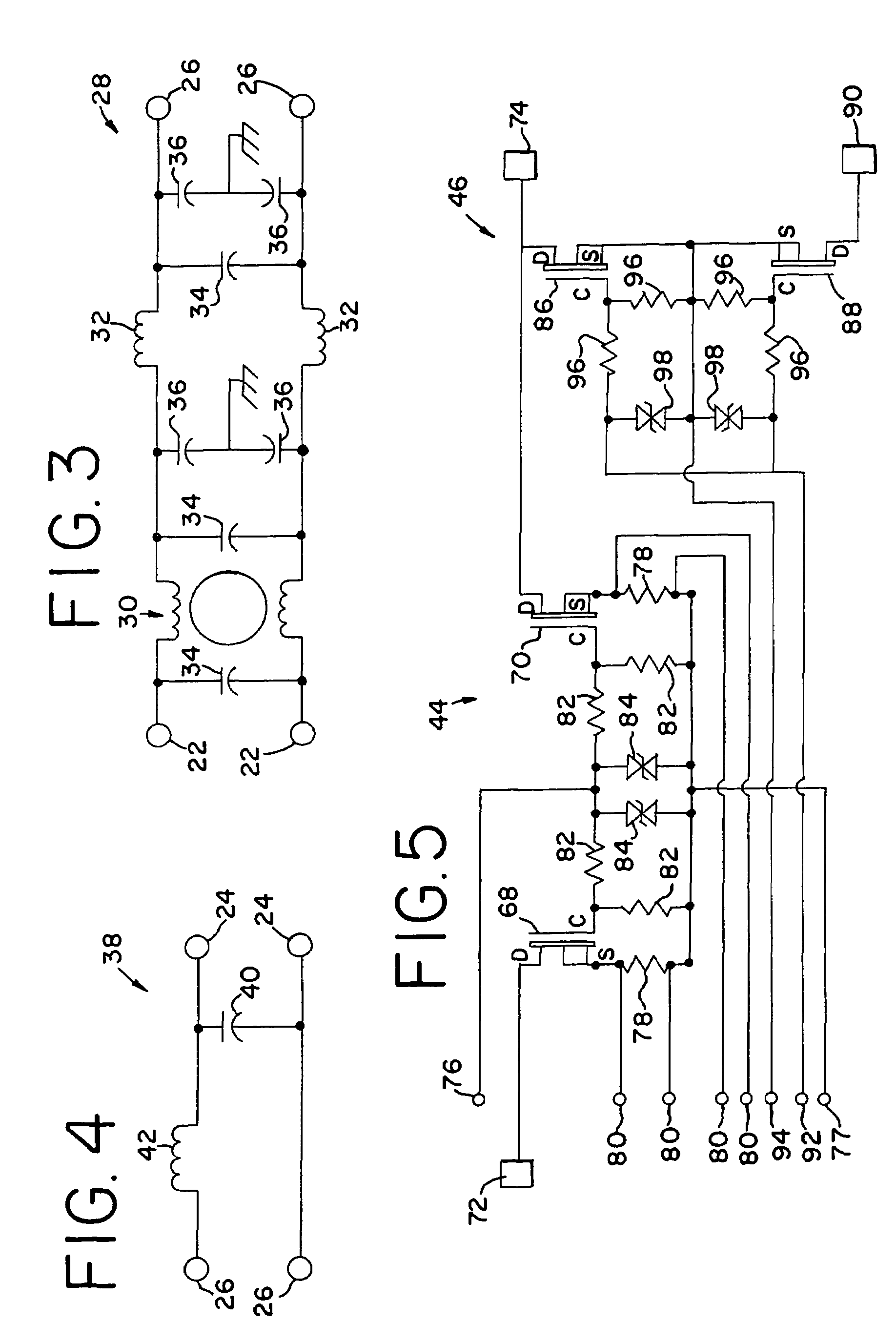Sinewave dimmer control method
a sine wave dimmer and control method technology, applied in the direction of electric variable regulation, process and machine control, instruments, etc., can solve the problems of electrical noise and mechanical filament noise, requiring extensive filtering, and noise incident to phase angle dimming can be unacceptable, so as to minimize undesirable voltage transients, maximize efficient power transfer, and maximize power coupling
- Summary
- Abstract
- Description
- Claims
- Application Information
AI Technical Summary
Benefits of technology
Problems solved by technology
Method used
Image
Examples
Embodiment Construction
[0024]Having reference now to the drawing, FIG. 1 is a simplified block diagram of a synchronous sinewave dimmer designated as a whole by the reference character 20. The dimmer 20 is connected to a conventional mains power supply 22 providing a sinusoidal alternating current power supply waveform of, for example, nominal 120 volts ac. The dimmer 20 provides output power to a load 24. In a typical application, the load 24 may be a resistive load such as an incandescent lamp, or a reactive load such as a power supply for a gas discharge lamp or fluorescent lamp. A power switching stage 26 uses pulse width modulation (PWM) to attenuate input power and supply reduced output power to the load.
[0025]An input line filter 28 filters out noise that may be present on the power supply signal and assures the supply of clean ac power to the power switching stage 26. In addition the input line filter 28 filters out switching noise from the power switching stage 26 and prevents the conduction of n...
PUM
 Login to View More
Login to View More Abstract
Description
Claims
Application Information
 Login to View More
Login to View More - R&D
- Intellectual Property
- Life Sciences
- Materials
- Tech Scout
- Unparalleled Data Quality
- Higher Quality Content
- 60% Fewer Hallucinations
Browse by: Latest US Patents, China's latest patents, Technical Efficacy Thesaurus, Application Domain, Technology Topic, Popular Technical Reports.
© 2025 PatSnap. All rights reserved.Legal|Privacy policy|Modern Slavery Act Transparency Statement|Sitemap|About US| Contact US: help@patsnap.com



